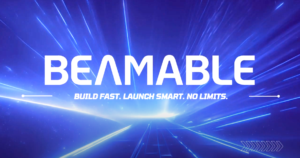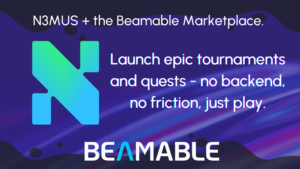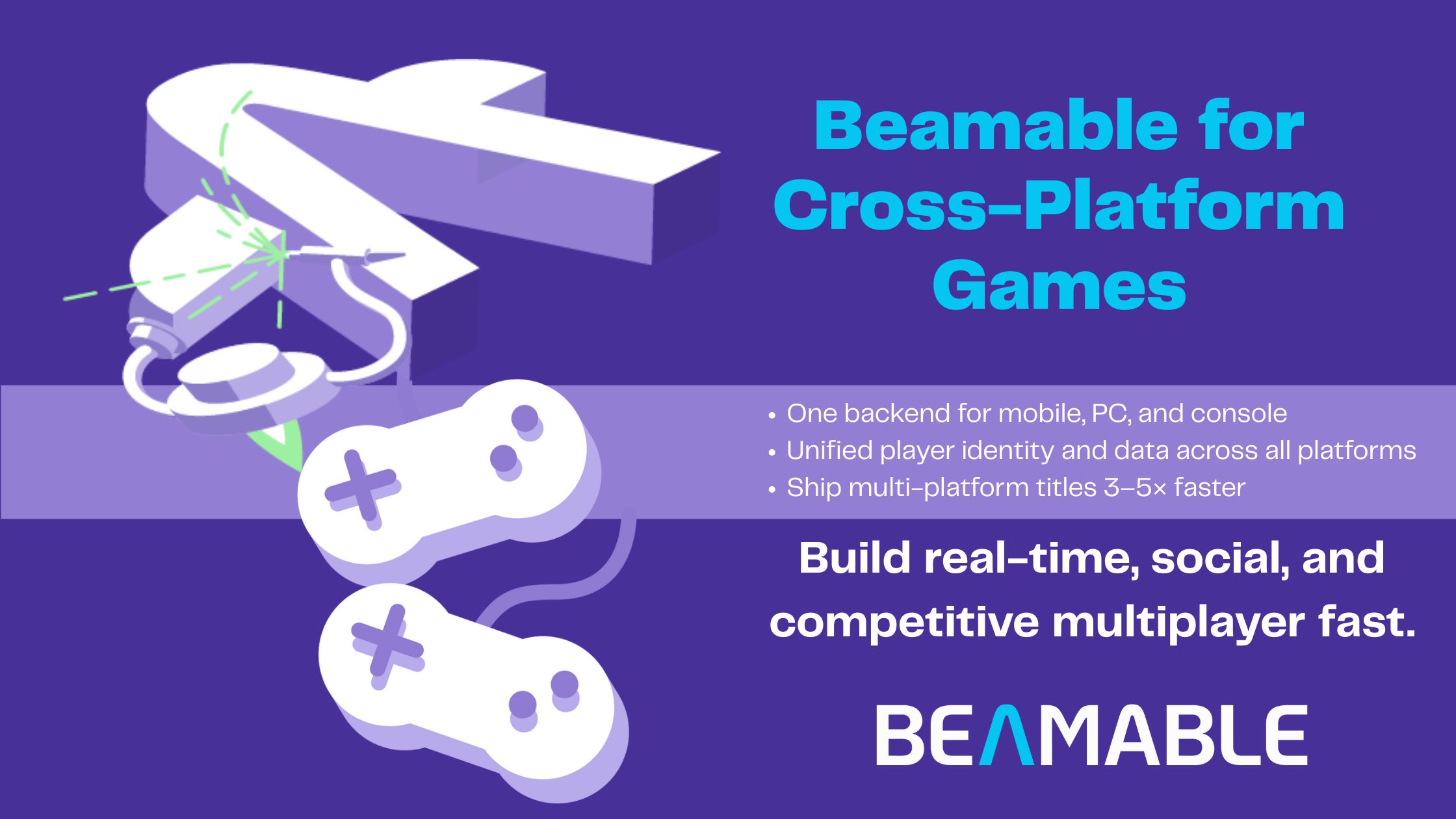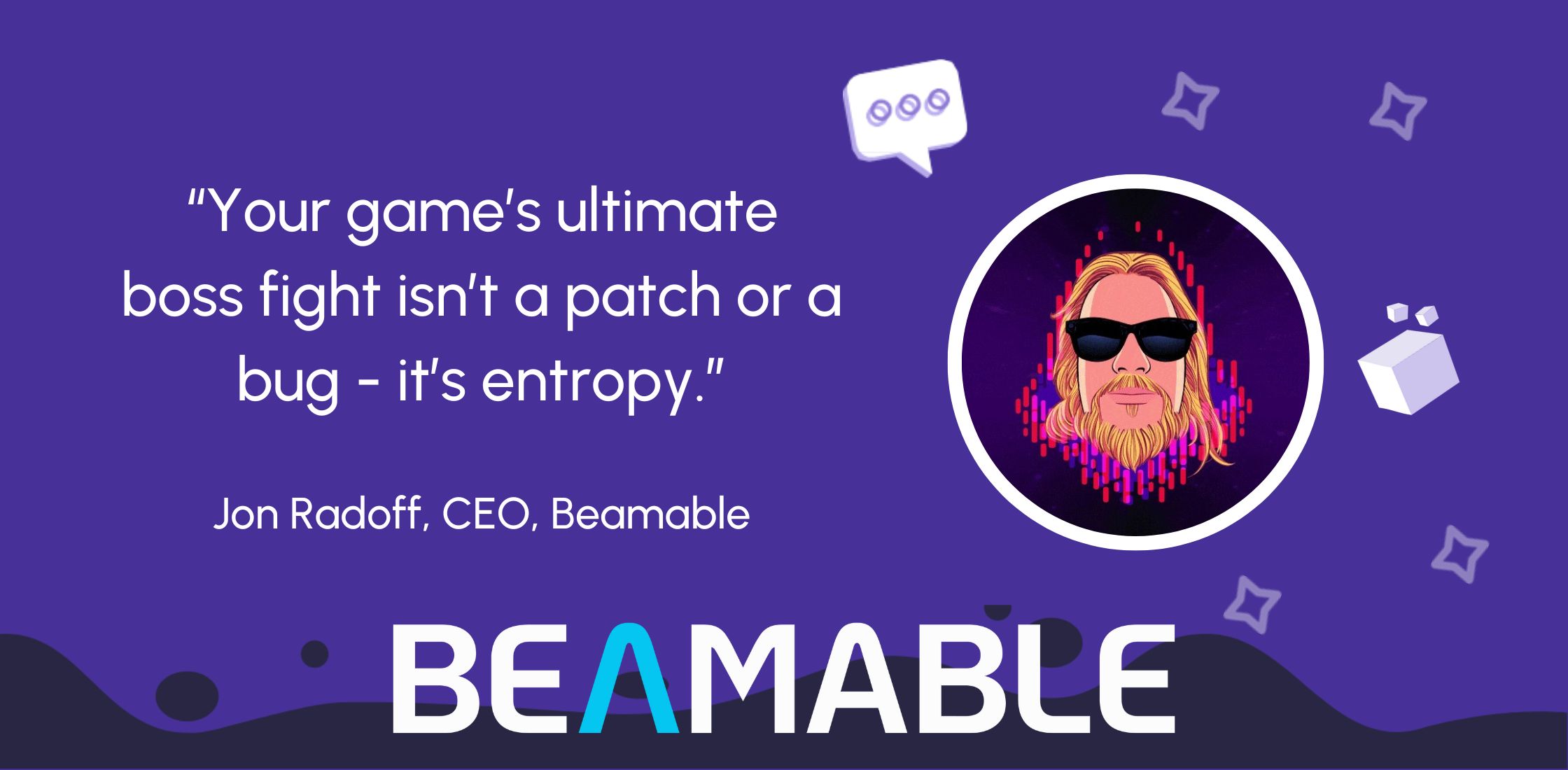What Studio Leaders Need to Ask Before Choosing a Live Game Backend
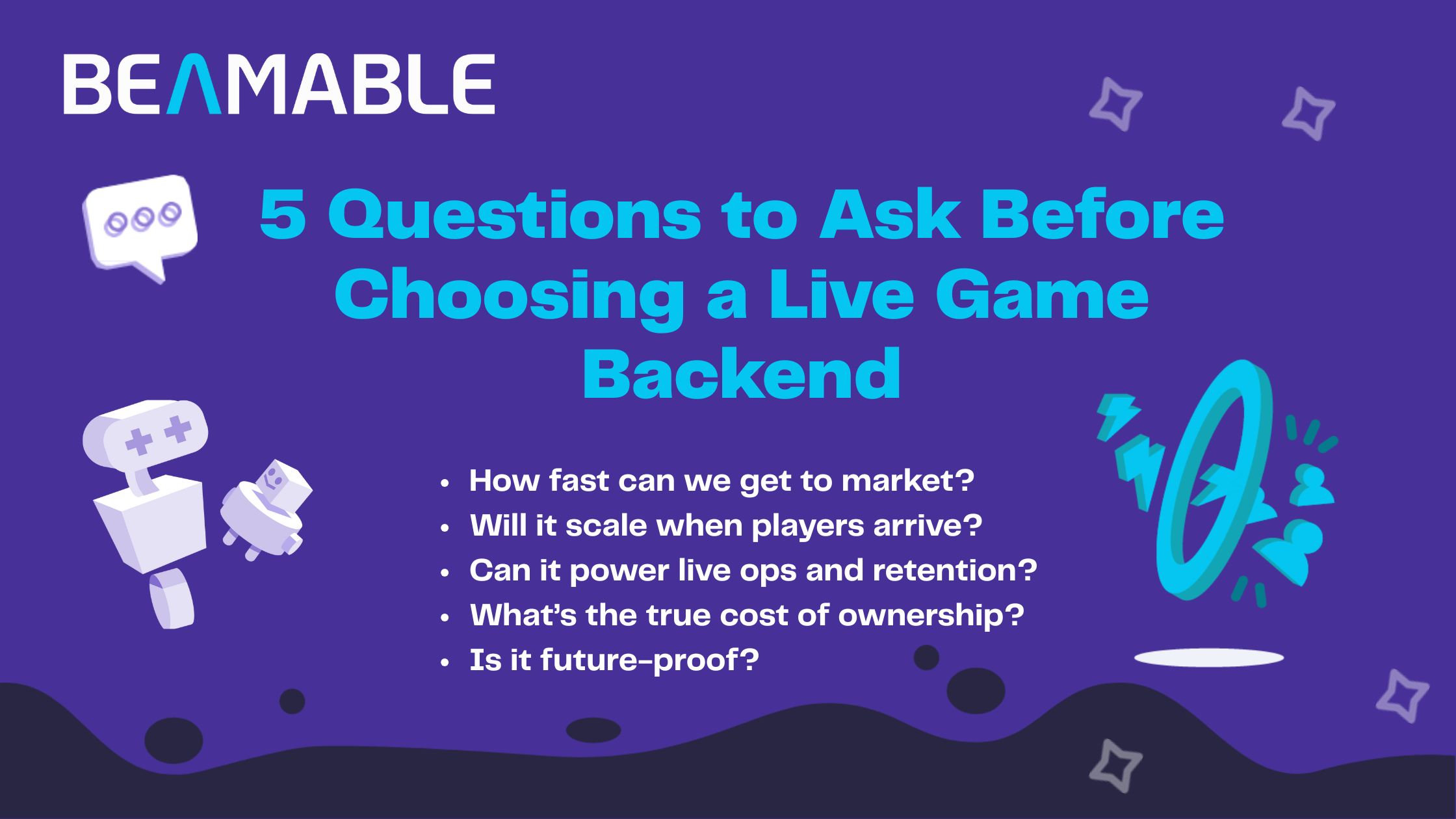
What Studio Leaders Need to Ask Before Choosing a Live Game Backend
Why Choosing the Right Live Game Backend Matters
The number one reason live games fail isn’t a lack of engagement; it’s wasted time and resources on backend infrastructure. Accounts, servers, commerce, leaderboards, and live ops are essential, but they don’t directly improve gameplay.
Studio leaders who choose the wrong backend risk delays, budget overruns, and missed market opportunities.
The proper live game backend lets you:
- ✅ Launch faster (saving 6–12 months of engineering time).
- ✅ Scale smoothly when player counts spike.
- ✅ Run retention-driving live ops without heavy dev lift.
- ✅ Lower the cost of ownership over the lifetime of your title.
- ✅ Future-proof your game across platforms and markets.
Here are the five critical questions every studio head, technical director, or producer should ask.
1. How Fast Can This Backend Get Us to Launch?
Time to market is everything. Ask vendors:
- Does the backend integrate natively with Unity and Unreal Engine so your developers can use a workflow they already know?
- Can we prototype and launch quickly with out-of-the-box game feature options?
- Can we easily extend the defaults with custom APIs or integrate in existing services?
Studios that move quickly don’t just save money; they capture players before the market shifts.
2. Will It Scale When Players Arrive?
Launching is one thing. Handling millions of players is another. Ask:
- Is this backend already powering live games at scale?
- How many monthly active players rely on it?
- What’s the track record for uptime and reliability?
A backend proven in production environments gives confidence that your game won’t collapse when it scales.
3. Can It Power Live Ops and Retention?
Retention — not just installs — drives revenue. Backend infrastructure should make engagement easy:
- Can designers and producers run events, sales, and A/B tests without engineers?
- Does the platform support leaderboards, challenges, and segmentation?
- How fast can we act on data and push changes into the game?
A backend that enables fast iteration helps you keep players engaged for years.
4. What’s the Total Cost of Ownership?
DIY and open-source solutions may appear cheaper upfront, but they often become more expensive over time. Ask:
- What are year-one and year-three costs, all-in?
- Does the provider cover security, payments, and compliance out of the box?
- How much engineering time will be tied up in backend support instead of new features?
Smart studios think beyond sticker price to long-term cost efficiency.
5. Is This Backend Future-Proof?
Your game won’t stay the same. Neither should your backend. Ask:
- Can we expand from mobile to console or PC without a rebuild?
- Is the provider shipping new features that align with industry trends?
- What’s the roadmap for support, community, and ecosystem growth?
Choosing a backend that evolves with you prevents painful rewrites in the future.
The Right Questions Lead to the Right Backend
Studio leaders don’t need to become backend experts — but they must ask the right questions before choosing. Speed, scalability, retention, cost, and future-proofing will determine whether your studio invests the next year in building infrastructure or creating great games.
At Beamable, we provide ready-to-use backend services for Unity, Unreal, and Web. With over 90 live games, 3 million+ monthly active players, and billions of monthly API calls, our infrastructure is battle-tested at scale. We help studios launch faster, scale seamlessly, and focus on gameplay — not servers.
👉 Schedule a Demo of Beamable’s Live Game Backend
👉Sign up for our newsletter to learn more ways to stay ahead in game development
FAQ: Choosing a Live Game Backend
What is a live game backend?
A live game backend provides cloud infrastructure for accounts, commerce, servers, leaderboards, and live ops — essential for multiplayer and live service games.
Why not build a custom backend in-house?
Custom builds often take 6–12 months and are significantly more expensive to maintain in the long term. A managed backend reduces risk, time, and total cost of ownership.
What backend works best with Unity or Unreal?
Beamable integrates directly into Unity and Unreal Engine, enabling teams to ship faster without the complexity of backend development.
How do I compare backend costs?
Compare year-one costs to year-three costs, including developer hours, scaling, compliance, downtime, and ongoing support. Hidden costs often make DIY backends more expensive.
Can a backend help with retention?
Yes. Platforms with built-in live ops, A/B testing, and player segmentation help studios keep players engaged long after launch.
